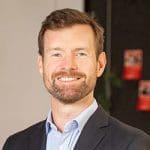Is ‘how’ the zeitgeist of the day?

28 July 2021 at 11:04 am
Alex Hannant shares some of his takeaways from Australia’s second social enterprise virtual unconference.
Last week, I joined colleagues at Australia’s “Social enterprise virtual unconference”. The second of its kind. The first one was triggered by the initial lockdown a year ago. I wonder how many of us expected to still be sitting at our kitchen tables a year on…
The event was a collaborative effort, but much kudos should go to Mikey Leung and the team at Digital Storytellers, who did much of the heavy lifting and impeccable hosting. The event covered many topics and was buoyed by two recent developments for the sector:
- the announcement that the Social Enterprise World Forum will be coming to Brisbane in September 2022 (paving the way for the Olympics); and
- the launch of a direction setting report to establish Australia’s first social enterprise national strategy (SENS).
Again, these initiatives were products of significant collaboration and critically, as a result, are attracting support and gathering momentum.
Read more: The time is now to step towards an Australian social enterprise strategy
My first impression of the event was surprise. More than 650 people registered for the day – this was more than the usual faces. I became curious about what the key themes and discussions would be – why was this diverse group of people and organisations meeting with each other? What would be the zeitgeist of the day?
Perhaps driven by the salience of the SEWF and SENS announcements, it seemed to me that conversations were trending toward taking stock, organising, building a better supporting infrastructure, and improving engagement – there was a focus on the “how” of doing the work, be that at the individual, organisational or sector level.
This was reinforced by the narrative thread of systems innovation and approaches that wove its way through the day, and received palpable interest and engagement. (Special mentions to: Bec Scott, Sally Quinn, Jaison Hoernel and Nick Verginis from SENVic, and Sharon Zivkovic and Roberto Daniele from Catalyst 2030). Also, the emphasis on the importance of “place” as a tangible way to understand and engage in systems work.
Other touchstone discussions included sustainable funding for jobs-focused enterprises – highlighting a persistent barrier and the need to better develop the sector’s underlying support systems, and also a commitment to decolonisation and the elevation of First Nations’ businesses.
Overall, I came away motivated and stimulated – the sector is maturing, collaborating and taking responsibility for its own development. The focus on “how to” wasn’t at the expense of the substantive issues that most of the attending individuals and organisations face every day – challenges of poverty, exclusion, and environmental degradation, to name but a few. Rather, for me, it was an unsaid (collective) recognition that efforts will continue to be mismatched to the size, complexity and urgency of these challenges, unless the sector grows in its sophistication, scale (albeit distributed), and connectivity.
We need to get serious about “the how”, if we are to make a difference on “the what”, and work meaningfully towards “the why”. The sector needs to evolve its ways of working, and in some cases deconstruct and reconstruct them.
The last reflection I have is a sense that the approach proposed in the SENS report feels like the right one for this sector and this time. That is, a mission-led approach to growing Australia’s social enterprise sector, based on a transformational agenda in respect to regenerative economies, inclusive economies, caring economies and local living economies.
Taking a mission-led approach means going beyond a focus on creating the conditions that enable individual social enterprises to succeed, to enabling the sector to organise and respond to system challenges in ways which no single entity, group or stakeholder constellation could address on their own. While growing a sector, might we also build an innovation system?
If I was to summarise what SENS is ultimately proposing, it would be:
- Foster a connected, responsive and adaptive innovation system made up of the numerous, diverse, dynamic and proliferating social enterprises in Australia, along with other actors and allies.
- Align that innovation system towards the big challenges that matter most, and which social enterprise can meaningfully impact and potentially transform – through distributed but coherent action.
- Strengthen the enabling environment for that innovation system through the provision of joined-up resources, support and policy.
- Ensure that the innovation system (sector) is vibrant, healthy and regenerative through fit-for-purpose and properly resourced communication, networked organising and governance – the connective tissue.
In terms of what’s next, the sector now needs to take deliberate and steady steps to make this architecture a reality. The pathways outlined in the SENS report recognise that process matters, and the importance of getting the resourcing, coordination, engagement, sequencing and governance right.
From the Unconference last week to the SEWF next September, the sector and its many allies have a compelling milestone to work towards, and a focused timeline to determine how the future of social enterprise in Australia might be shaped.







